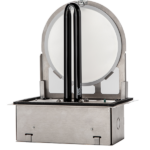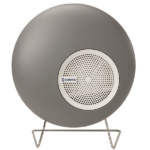February is American Heart Month, a month-long observance where people can and should take stock of their heart health. At Synexis, we’re focused on indoor air quality (IAQ) and indoor environmental quality (IEQ). If you think that means there’s no link, you’d be wrong! A large body of science has shown that air pollution, both outside and inside, are culprits. It can exacerbate existing cardiovascular disease and contribute to the development of the disease. So improving heart health and indoor air quality can go hand-in-hand.
Research by the Environmental Protection Agency (EPA) and other organizations have found that exposure to increased concentrations of PM2.5 over a few hours to weeks can trigger cardiovascular disease-related heart attacks and death. Longer-term exposure can lead to increased risk of cardiovascular mortality and decreased life expectancy.
Understanding PM2.5 Particles and Sources and Their Impact on Hearth Health and Indoor Air Quality
PM2.5 refers to fine particulate matter that is suspended in the air, emitted from various sources, such as:
- Combustion – Burning of fossil fuels by vehicles, power plants, and heating systems releases PM5 into the atmosphere.
- Cooking – Indoor cooking, particularly with gas stovecs, can produce significant amounts of PM5.
- Tobacco Smoke – Cigarette smoke contains high levels of PM2.5, contributing to indoor air pollution.
- Household Products – Certain household cleaners, air fresheners, and aerosol sprays can emit PM5 particles.
Consequences of PM2.5 Exposure
Many cardiovascular issues are linked to exposure to PM2.5, including:
- Hypertension – Inhalation can lead to inflammation and oxidative stress, which contributes to elevated blood pressure levels.
- Atherosclerosis – Particles in the bloodstream can lead to the development of atherosclerosis, which leads to a narrowing and hardening of the arteries.
- Arrhythmias – Exposure has been associated with disturbances in heart rhythm, which can increase risk of arrhythmias and other cardiac events.
- Heart Attacks/Strokes – Prolonged exposure has been linked to an increased incidence of heart attacks, strokes, and other cardiovascular emergencies.
Innovative technologies like those Synexis brings are pivotal in the pursuit of optimal heart health. With devices that combat indoor pathogens that can impact heart health, utilizing air purification devices from Synexis can help. They give everyone who steps foot in the buildings it exists a little more peace of mind. By reducing the presence of those harmful pathogens with Dry Hydrogen Peroxide (DHP®), those risk factors associated with heart health and indoor air quality can be limited.
By harnessing the power of the DHP technology, Synexis offers a proactive solution to combat indoor pathogens and create healthier indoor environments. We should all be prioritizing cardiovascular wellness, particularly during American Heart Month, so the integration of Synexis devices into indoor spaces is taking that necessary step toward safeguarding heart health and promoting overall well-being.
To speak with an IAQ expert from Synexis, fill out this form and we’ll be in touch as soon as possible.
To learn more about Synexis, click here.

















